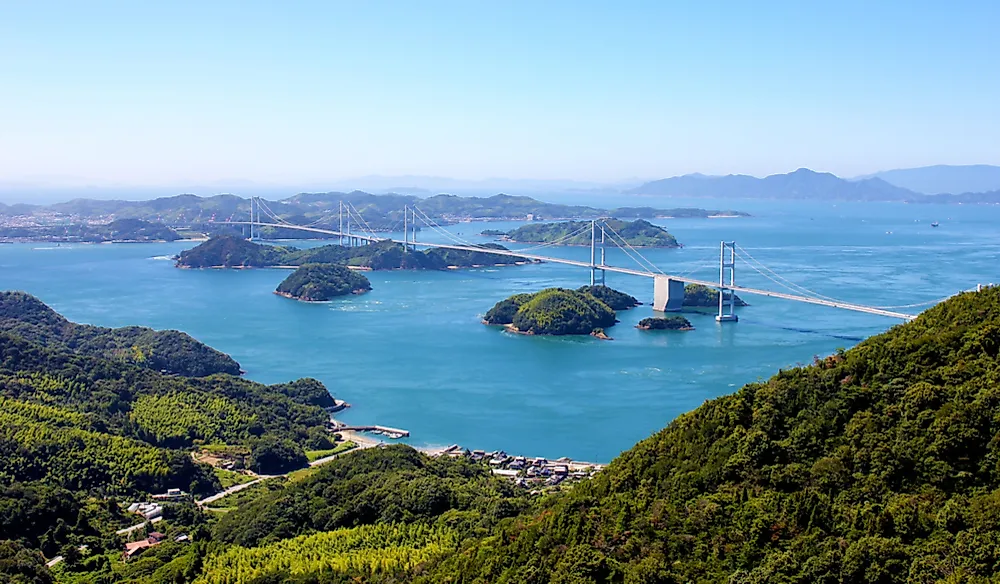Where Is The Seto Inland Sea Located?

The Seto Inland Sea, also referred to as Setouchi, is located in Japan and separates the islands of Kyushu, Shikoku, and Honshu. The sea is also defined as the waterway which connects the Sea of Japan to the Pacific Ocean. The sea covers a surface area of 9,000 square miles. The sea has an elongated shape, having a length of 280 miles which contrasts its width which ranges between 10 and 34 miles wide. The depth of the sea averages about 125 feet and is 344 feet at its deepest point. The region surrounding the sea is densely populated and is home to some major Japanese cities such as Takamatsu and Hiroshima.
Geography of the Seto Inland Sea
The Seto Inland Sea is home to thousands of islands estimated to number over 3,000 in total. However, despite having a large number of islands, only a few of them are habitable. Some of the major islands found in the sea include Hashira-Jima and Suo-Oshima (both found in the western part of the sea), Shodo and Shiwaku Islands (situated in the sea’s eastern section), and Kasaoka and Omishima islands (found in the central part of the Seto Inland Sea). Straits separate the major islands found in the Seto Inland Sea. Straits are also found at the peripheries of the sea where it connects to neighboring water bodies. Examples include the Bungo Channel which connects the sea to the Pacific Ocean and the Kanmon Straits which marks the border between the sea and the neighboring Sea of Japan.
The Great Seto Bridge
Transport across the sea was traditionally carried out via boats and later using ferries up until the late 20th century when a series of suspension bridges were built to connect the islands of Shikoku and Honshu. These series of bridges were collectively known as the Great Seto Bridge. Built in the late 20th century the project was opened in 1988 and cost an estimated $7 billion. Spanning a total length of 8.1 miles, and it is a double-decked suspension bridge system made up of an expressway on the upper deck, and two rail lines on the lower deck. The longest of the constituent bridges of the Great Seto Bridge is the Shimotsui-Seto Bridge. The double-decked suspension bridge spans 4,600 feet in length making it among the longest of its kind in Asia. Other suspension bridges on the system include the Minami Bisan-Seto, Yoshima, and Iwakurojima bridges.
Red Tide in the Seto Inland Sea
The Seto inland sea is also famous for what is known as red tide. The term refers to the blooming of algae whose large concentration turns the sea water to a reddish color. While these algae are part of the marine ecosystem, their presence can have numerous detrimental effects both on their environment as well as to humans. First, the algae release toxins which are harmful when ingested and can result in the deaths of many organisms throughout the food chain. The worst affected are filter feeders which consume large quantities of the algae. Animals which then consume these filter feeders are also poisoned by the toxins usually with fatal consequences.











